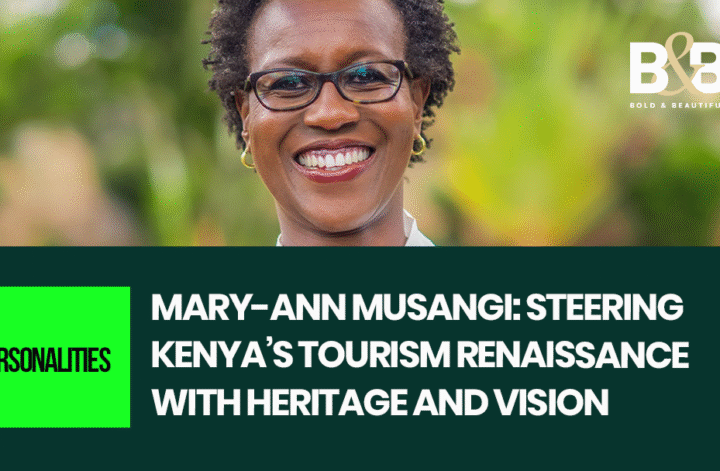When Mary-Ann Musangi steps into her new role leading Kenya’s tourism rebrand, she carries history, heritage and ambition with quietly focused authority. As an heiress of the late Kenyan magnate Chris Kirubi, she brings not only capital but experience running institutions rooted in national pride and global reach.

Her appointment arrives at a time of global travel recovery and Africa’s renewed appeal as a destination. Kenya sees an opportunity not only to draw tourists back but to reset the narrative, one that incorporates culture, conservation, modernity and luxury. Mary-Ann’s background equips her to tell that expanded story in a way few can.
Raised in Nairobi, she grew up in a home filled with art, business discussions and frequent access to world-class hospitality. While studying in London and later at an Ivy League university, she absorbed global frameworks for brand building and destination marketing. A gentle yet curious leader, she studied how places transform assumptions into experiences.

She returned to Kenya to head a private foundation focused on cultural preservation and youth opportunity. She supported heritage sites, funded digital storytelling projects and brought international attention to local artisans. In essence, she had already begun a quiet rebrand of Kenya, from the ground up.
Now, as the appointed head of the national tourism rebrand effort, she moves into governmental collaboration. Her first steps include workshops with Maasai elders, Lamu historians, Chef-curated safari experiences and Nairobi street-art tours. The message she sends is clear: Kenya’s identity cannot be reduced to acacia silhouettes and reserve gates. It thrives in people and their customs.
Within days of her appointment, she convened travel industry executives, community leaders and global counterparts to sketch a visual identity that balances bold modernity with heritage colours and textures. A logo concept incorporates a Maasai bead pattern subtly framing a rising sun. The colours nod to Amboseli’s soil, Mombasa’s coastal coral and Nairobi’s urban green spaces.

This is not just marketing. Mary-Ann knows that authenticity draws visitors more than gloss. She builds town-to-country pathways: community-run lodges, creative residencies for international artists, slow-travel itineraries across Rift Valley towns. Each itinerary is backed by logistics and digital infrastructure to ensure quality and cultural exchange.
In emphasizing inclusivity, she brings women-owned enterprises into the spotlight. Tea-farm home stays, artisanal beading workshops in Turkana, Swahili cooking classes on the coast, all gain national and international stages through partnership rather than tokenism.
Critics caution that rebrands can remain superficial. Mary-Ann acknowledges that challenge and ties performance metrics to visitor feedback, conservation outcomes and local income growth. She sees the rebrand as a framework, not a finish line.
For global partners, her leadership signals a shift. This is not about inviting tourists. It is about inviting engagement, an Africa that is seen in full dimension. As Kenya launches new promotional campaigns in travel markets across Europe, Asia and the U.S., it is clear how her upbringing informs the work: elegant, grounded and future-facing.
Mary-Ann Musangi’s appointment ushers in Kenya’s most thoughtful tourism pivot in decades. She merges heritage, luxury, inclusivity and clarity. She holds the dual promise of preserving what makes Kenya uniquely Kenyan and presenting it to the world in ways that resonate far beyond postcards.




